Blake Crowley wrote:
Hello, my name is Blake Crowley and I am an elementary school PE
teacher out here in Berkeley, CA. We have a bunch of stilts in the
basement which I would love to use, however I don’t know how to walk
on stilts and nor have I ever tried to teach kids. I was wondering if
you had any tips for teaching? What I know so far is to keep the kids
close to our tall fence (20ft), practice lifting one foot then the
other, then move to “walking.” Do you have any other advice or tips?
Any help would be appreciated!Thanks,
– Ms. Blake Crowley
The fundamentals of how to walk on stilts[/caption]
http://stiltwalker.com/wp-content/uploads/2013/01/Stilt-Party-signs-Binder1.pdf
Tell them to keep their thumbs lined up with the seam of their pants. Or in other words, you want their hips pretty much centered on the stilt pole, and not have their butt sticking way out front or back. Girls may stand different than the boys because their center of gravity is different. Depends on their age. Stand up tall !
Put the center of the foot on the stilt, tight against the stilt pole. Observe what happens when they stand on the stilt using the ball of the foot: the stilt tends to rotate, causing loss of balance.
Spotter stand to the rear of the student. Spotter keeps student from falling backwards with a minimal of contact. Student will learn faster if spotter lets them fail, then offer correction, rather than micro managing the student. At some point, silence is best. Encourage student to relax with deep breaths if they should get too tense to learn.
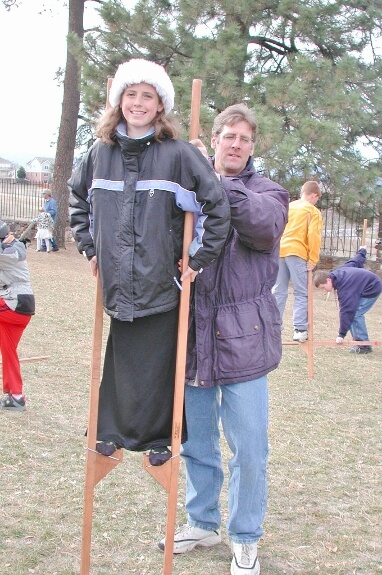
When helping someone learn how to walk on stilts, stand at their back, and using a lite grip, help them get their balance.
Start by “marching in place”. Concentrate on picking up the knees. If student is having trouble with hand and foot coordination, have them practice with bucket stilts. Picking up the knees is an important skill, especially when walking on grass or rough ground. If the student doesn’t “pick up their knees” they will drag the stilt, or “stub their toe” causing lose of balance.
After marching in place, start walking with SMALL steps. Tiny steps. Tendency is to take big steps, and getting wide legged.
Spotter should be hands off the student as soon as possible. Use only occasional help to prevent the student from falling. Student needs to learn how to correct from losing balance, so let them lose balance . . . a little, and then recover on their own.
Take two or three paper grocery bags and roll them into a soccer ball size ball. Set up a goal and play hockey. Set up an obstacle course with the bags and and have races. Have backward walking races. Learning to step backwards to recover balance is an important skill. Have side ways walking races.
Some students will benefit from learning to mount using a bucket or two to stand on. Or leaning against a wall or tree. Some students will enjoy using a three step running mount to get on to stilts that are taller, near two feet tall or taller.
Lots of possibilities, have fun and send me photos! Need more stilts? I offer three sizes of adjustable stilts for sale in the shop.

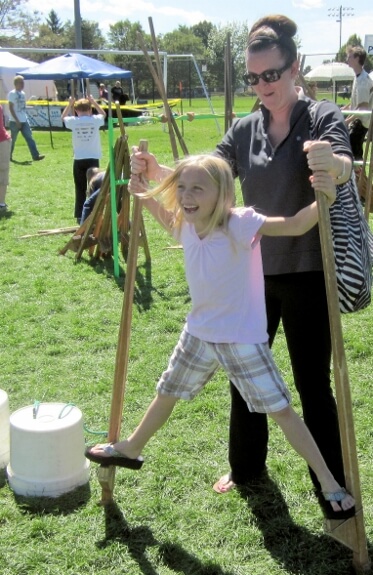

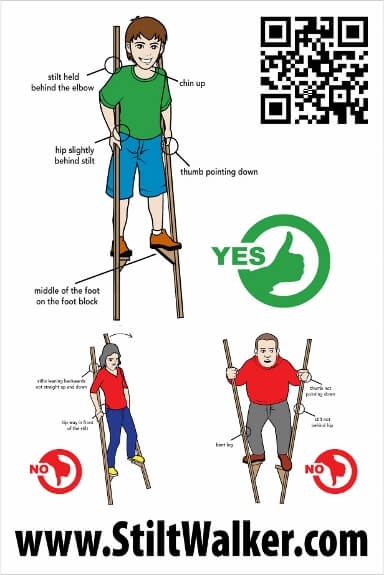
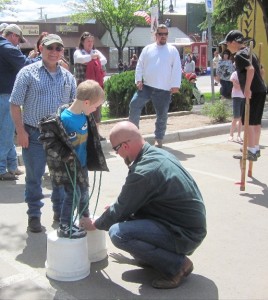
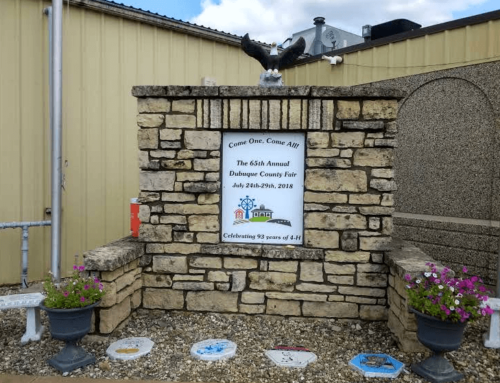
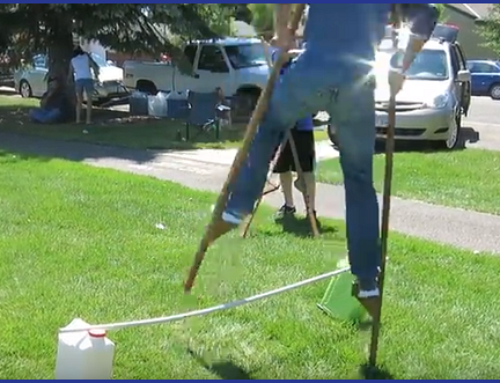
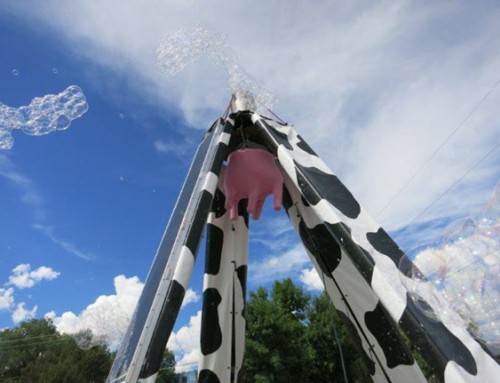
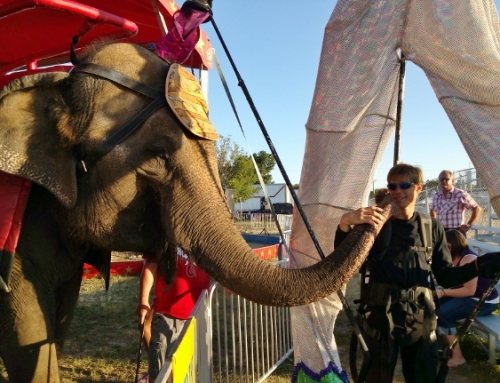
[…] Link: http://stiltwalker.com/stilts/stilt-clinic/how-to-walk-on-stilts/ […]